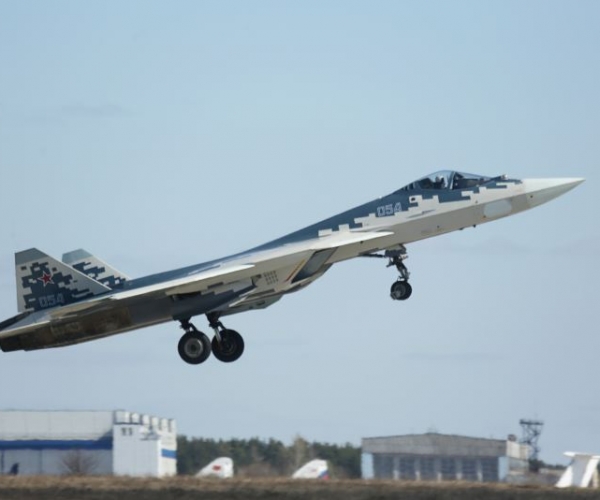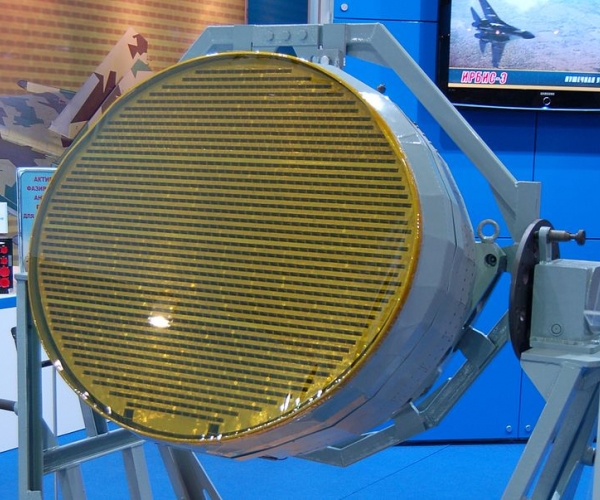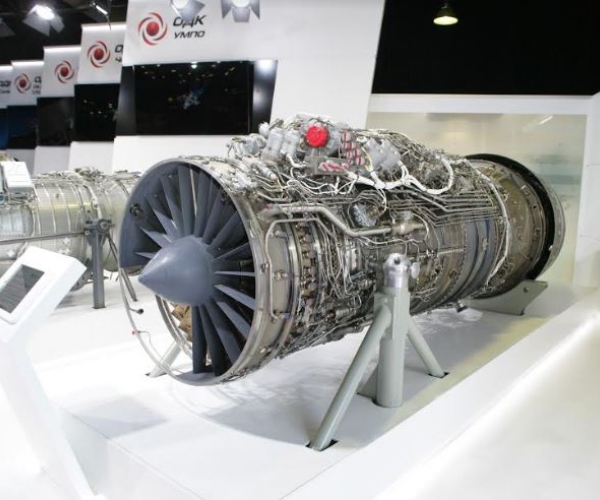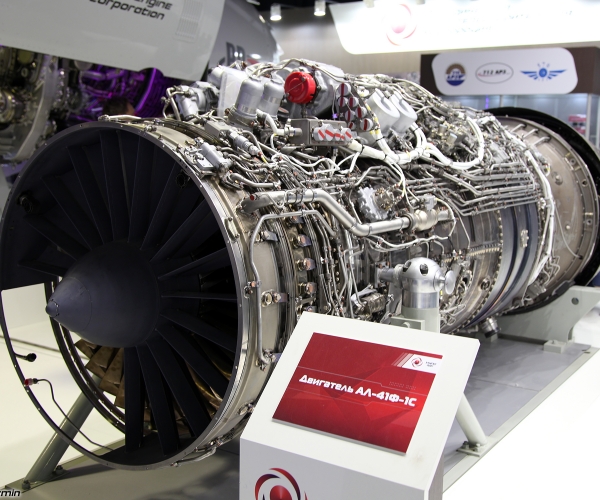First Public Flight of Russian Su-57 Stealth fighter at Army 2018

Su-57 fighter aircraft (Image:United Aircraft Corp.)
Russian fifth generation fighter aircraft (FGFA) Su-57 will for the first time perform flights during the ARMY 2018 event near Moscow next week.
The Su-57 is the production version of the FGFA previously designated as PAK-FA or T-50. The Russian Aerospace Forces have ordered 12 of the aircraft. A pair of Su-57 were earlier deputed to Syria ostensibly to test their electronic systems in combat conditions.
The Su-57 comes equipped with the first stage engine which opened the path to the serial production of the FGFA. A second stage engine, having the ability to super-cruise (fly at super-sonic speed without fuel-guzzling after-burners) is being flight-tested and is in advanced development.
Su-57 is equipped with an entirely new set of deeply-integrated avionics featuring a high level of controlled automation and intelligent crew support. This considerably reduces the pilot’s workload and allows the pilot to concentrate on tactics. The avionics of the new airplane enable real-time data exchange with both ground-based control systems and within air groups, and also support off-line operation.

Some of the highlights of the aircraft are:
- six internal and six external hardpoints for a variety of missiles and bombs for all possible requirements
- top speed up to Mach 2
- X-band AESA radar giving an excellent situation awareness
- L-band AESA radar for target identification
- State-of-art infra-red search and track (IRST) system capable of identifying objects through their heat signature much beyond the radar’s range
- Integration of the avionics suite with an information control system (ICS)
- Himalaya onboard defense system which not only performs jamming but also acts as a radar
- Composite materials
- Extremely low radar signature, optical and infrared visibility
According to the Concern Radio-Electronic Technologies (CRET), which integrates major Russian developers and producers of the military aviation radio electronic systems, Su-57 can be viewed as a ‘flying robot’, where the pilot becomes only one of the integral parts of the aircraft. This means that his reaction is already included into the overall control network

Powerplant progress
Su-57 that will fly at ARMY 2018 will be fitted with AL-41F1 engine developed by Moscow-based Development Design Bureau named after A.M. Lyulka (part of the United Engine Corporation) which is credited with creation powerplants for all Sukhoi combat jet aircrafts, including AL-31FP powering IAF’s Su-30MKIs. The work on the engine lasted about 14 years. The milestone was the first Su-57 flight in 2010. Today finally the work is over, and AL-41F1 in 2018 has successfully passed the state bed tests, which makes possible its serial production, which also means the serial production of Su-57 itself.
But meanwhile another project is hurrying up – Su-57 is going to get the 2nd stage engine currently known as Izdelie-30. It will considerably increase the performance of Su-57.
In December 2017 the first flight of Su-57 with a new engine took place in Zhukovsky air base near Moscow thus starting the flight test. As the United Engine Corporation reported, the in-flight working time of the new engine was 17 minutes, overall working time – 37 minutes.
This engine is considered the most cutting-edge engine in Russian aviation history. Some of its features, though not officially confirmed include:
- The most up-to-date technologies and materials are used, which allows reaching the requirements for a fifth generation power-plant
- Increasing the specific thrust gives a plane the so-called super-sonic cruising speed.
- The fuel efficiency has risen due to the drop in the level of the specific fuel consumption.
- The power-plant has an integrated intelligent control system which provides real-time performance information to the pilot.

Su-57 and India
For India the development of Su-57 is of special interest as New Delhi has already invested in the project design stage for the export version of the Su-57. In the background of a dwindling fleet, India is set to receive Dassault Rafale jets and increase the numbers of Su-30MKI jets. Thus India will be gradually getting more of the new fourth generation aircraft while China would be rapidly operationalizing its J-20 and FC-31 fifth generation aircraft. The Chinese media also reported that FC-31could be exported to Pakistan.
According to media reports, India has dropped from the FGFA development program but has kept the option open for buying the Su-57 when the aircraft is ready for export. The Su-57 acquisition will also help India gain firsthand experience with the FGFA and help in the development of its own Advanced Medium Combat Aircraft (AMCA).









